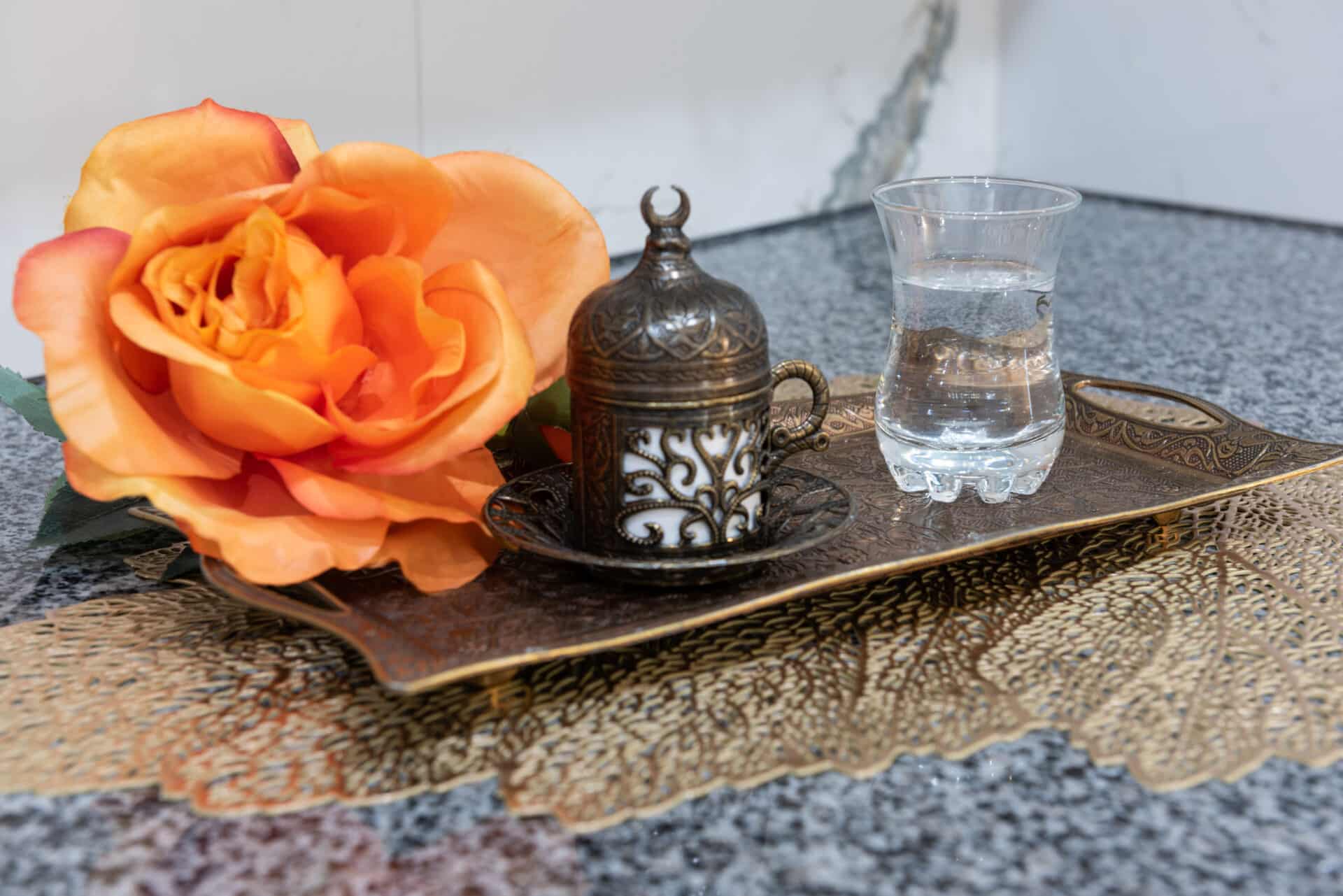The temperature of your hot water heater is an important factor in ensuring that you have a safe and comfortable home. Knowing the right temperature to set your hot water heater at can help you avoid scalding, while also preventing energy waste. In this article, we will discuss what temperature to set your hot water heater at in order to maximize safety and efficiency.The recommended temperature for a hot water heater is 120°F (49°C). This temperature is safe for most uses and helps to prevent the growth of bacteria in the water.
What Temperature Should I Set My Hot Water Heater At?
The best temperature to set your hot water heater at is typically between 120°F and 140°F. Setting the temperature too high can pose a risk of scalding, especially for children and elderly people. On the other hand, setting it too low could mean you won’t have hot water when you need it. It’s important to find the right balance for your home.
When adjusting the temperature of your hot water heater, it’s important to consider the safety of your family members, especially those who are more vulnerable to scalding, such as children and elderly people. The American Red Cross recommends setting your water heater no higher than 120°F to prevent accidental scalding.
If you have young children in your home, consider setting the temperature even lower — between 110°F and 115°F — to reduce any potential risks associated with scalding. If you’re looking for maximum energy efficiency, try setting it slightly higher, between 130°F and 140°F. This should give you plenty of hot water while still keeping energy costs down.
Ultimately, finding the right balance between safety and efficiency is important when deciding what temperature to set your hot water heater at. Be sure to consult with a professional if you’re unsure about what temperature is best for your home.
Factors to Consider When Setting Hot Water Heater Temperature
Setting the temperature of a hot water heater is an important decision that can have a major impact on your home and family. There are several factors to consider when adjusting the thermostat on your hot water heater, including energy efficiency, safety, and comfort. Understanding these factors and making an informed decision can save you money in the long run and ensure that your family is safe and comfortable.
One of the most important considerations when setting the temperature of a hot water heater is energy efficiency. Generally speaking, lower temperatures result in greater energy efficiency, as less energy is required to heat the water to a lower temperature. This can result in significant savings over time, as well as reduced environmental impact. On the other hand, higher temperatures can be more convenient for washing clothes or dishes and may be necessary for certain tasks such as sanitizing dishes or killing germs during laundry.
Safety is also an important factor to consider when setting the temperature for your hot water heater. The U.S Consumer Product Safety Commission recommends setting it no higher than 120°F (49°C) to prevent scalding from contact with hot water. This is especially important if you have young children or elderly family members in your home who may be more vulnerable to burns or scalds from overly hot water.
Finally, comfort should be taken into account when selecting the temperature of your hot water heater. Every individual has their own preference of how hot they like their shower or bathwater, so it’s important that you find a temperature that everyone in your household is comfortable with. Keep in mind that even if you set it lower than 120°F (49°C), you may still need to let the tap run for a few seconds before getting warm water due to heat loss through pipes and connections in older systems.
Overall, setting the temperature on your hot water heater involves balancing energy efficiency, safety, and comfort considerations. Understanding these factors can help you make an informed decision about what temperature is best for you and your family’s needs while saving money on utility bills in the long run.
What is the Best Temperature for Hot Water Heater?
The ideal temperature setting for a hot water heater can vary depending on individual needs and preferences. Generally, most homeowners prefer to set their hot water heater temperature at 120°F (49°C). This setting balances energy efficiency and safety while providing an adequate temperature for most uses.
For safe bathing, washing dishes, and other household activities, the Centers for Disease Control recommends setting your hot water heater temperature at 140°F (60°C). At this setting, the water is hot enough to keep bacteria from growing in the tank. It’s also hotter than most people prefer for bathing or washing dishes, so you may need to adjust it down slightly.
If you have children in the home, you may want to consider setting the temperature lower—around 120°F (49°C)—to reduce the risk of scalding. For households with elderly members or those with sensitive skin, you may want to consider an even lower setting of 110°F (43°C).
Finally, for maximum energy efficiency and cost savings, you can set your hot water heater as low as possible without compromising comfort or safety. As a general rule of thumb, every 10°F reduction in water heater temperature can save up to 5% on your energy bill.
Benefits of Setting Hot Water Heater at the Right Temperature
Setting your hot water heater at the right temperature can provide many benefits, both for your wallet and for your safety. Doing so can help you save money on energy bills, reduce the risk of scalding, and help protect the environment.
The ideal temperature for a hot water heater is 120 degrees Fahrenheit or lower. This temperature is hot enough to kill most bacteria while still being cool enough to prevent scalding. By setting it this low, you can save up to 10% on your energy bills. Additionally, it helps reduce energy consumption and thus helps protect the environment.
Keeping your hot water heater at a lower temperature also reduces the risk of scalding. It is especially important if you have young children or elderly family members living in your home as they are more prone to suffering from severe burns due to extremely hot water.
Setting your hot water heater at the right temperature can also help extend its lifetime. If it’s set too high, it will be working harder than necessary and may wear out faster as a result. This can be costly in terms of replacement costs and energy bills.
In conclusion, setting your hot water heater at the right temperature has many benefits including saving money on energy bills and reducing the risk of scalding. It also helps protect the environment by reducing energy consumption and extending its lifetime.

Risks of Setting Hot Water Heater at the Wrong Temperature
Setting a hot water heater at the wrong temperature can lead to a variety of risks and issues. If the temperature is set too high, it can cause serious burns or scalding when someone comes into contact with the hot water. Additionally, setting the temperature too high can also increase energy costs due to higher energy usage. On the other hand, setting the temperature too low can result in water that is not hot enough for certain uses, such as washing dishes or taking showers. This can be especially problematic in colder climates where additional energy may be needed to heat cold water.
In addition to safety and comfort concerns, setting a hot water heater at an improper temperature can also increase risk of potential damage to the unit itself. If temperatures are set too high, it can put excess strain on components of the unit over time and cause unnecessary wear and tear resulting in costly repairs or replacements. Setting temperatures too low may lead to mineral buildup due to lack of sufficient heat for proper mineral solubility and metal corrosion due to insufficient flushing of tank sediments.
For these reasons, it is important to make sure that your hot water heater is set at an appropriate temperature that will provide both safety and comfort while avoiding unnecessary damage or excess costs caused by improper settings.
How to Adjust the Thermostat on a Hot Water Heater
Adjusting the thermostat on a hot water heater is an easy task. To adjust your hot water heater’s temperature, first locate the thermostat, which is usually on the side of the tank. It will have a dial with numbers from 1 to 10 that indicate the temperature. Next, you will need to turn off power to the hot water heater by flipping off its circuit breaker at your home’s electrical panel. This will prevent any electric shock during adjustment. Now you are ready to adjust the thermostat.
Turn the dial to a lower setting if you want cooler water or to a higher setting if you want hotter water. The optimum temperature for hot water heaters is usually 120°F. After adjusting, turn on the power and wait approximately 20 minutes before testing the temperature of your hot water at one of your faucets. If necessary, make additional adjustments until you achieve your desired temperature.
It is important to note that hot water heaters should be serviced at least once per year by a professional plumber to ensure optimal performance and safety. Additionally, it is best practice to check for any changes in performance or leaks around your unit regularly and contact a local plumber if any issues arise.
Safety Precautions When Setting the Temperature of a Hot Water Heater
It is important to take the right safety precautions when setting the temperature of your hot water heater. Taking the proper steps to ensure that your heater is set at the correct temperature can save you from potential danger and costly repairs. Here are some tips to help you get it right:
First, make sure that you have read and understand all of the manufacturer’s instructions before attempting to adjust the temperature. You should also check for any local or state building codes that may apply. It is important to always follow these instructions and regulations in order to avoid any potential safety hazards.
Second, always shut off the power supply before adjusting the temperature setting on your hot water heater. This will prevent any accidental shocks or burns from occurring due to electrical current.
Third, make sure that you know how to properly adjust the temperature setting on your hot water heater before attempting it yourself. Many people turn up the temperature too high, which can cause scalding and other potential hazards. It is best practice to keep the temperature setting between 120-140 degrees Fahrenheit in order to reduce this risk.
Finally, keep an eye on your hot water heater after adjusting its temperature setting. If you notice any changes in performance or smell a strange odor coming from it, then it may be time for a professional inspection or repair. Taking these precautions will help you ensure that your hot water heater is operating safely and efficiently at all times.

Conclusion
Generally, hot water heater should be set at 120 degrees Fahrenheit (49 degrees Celsius). This temperature is considered the best balance between energy efficiency and preventing scalding. Setting your hot water heater any lower than this may lead to bacteria growth in your water tank, while setting it any higher can cause unnecessary energy waste and increase the risk of scalding.
For households with young children or elderly individuals, reducing the temperature of your hot water heater even further may be necessary in order to prevent accidental scalding. Additionally, if you have a dishwasher, it’s recommended to set it a bit higher (around 140 degrees Fahrenheit or 60 degrees Celsius) for better cleaning results. If you’re not sure what temperature to set your hot water heater at, consulting with a professional plumber or HVAC technician can help ensure that you get the best balance between safety and efficiency.

